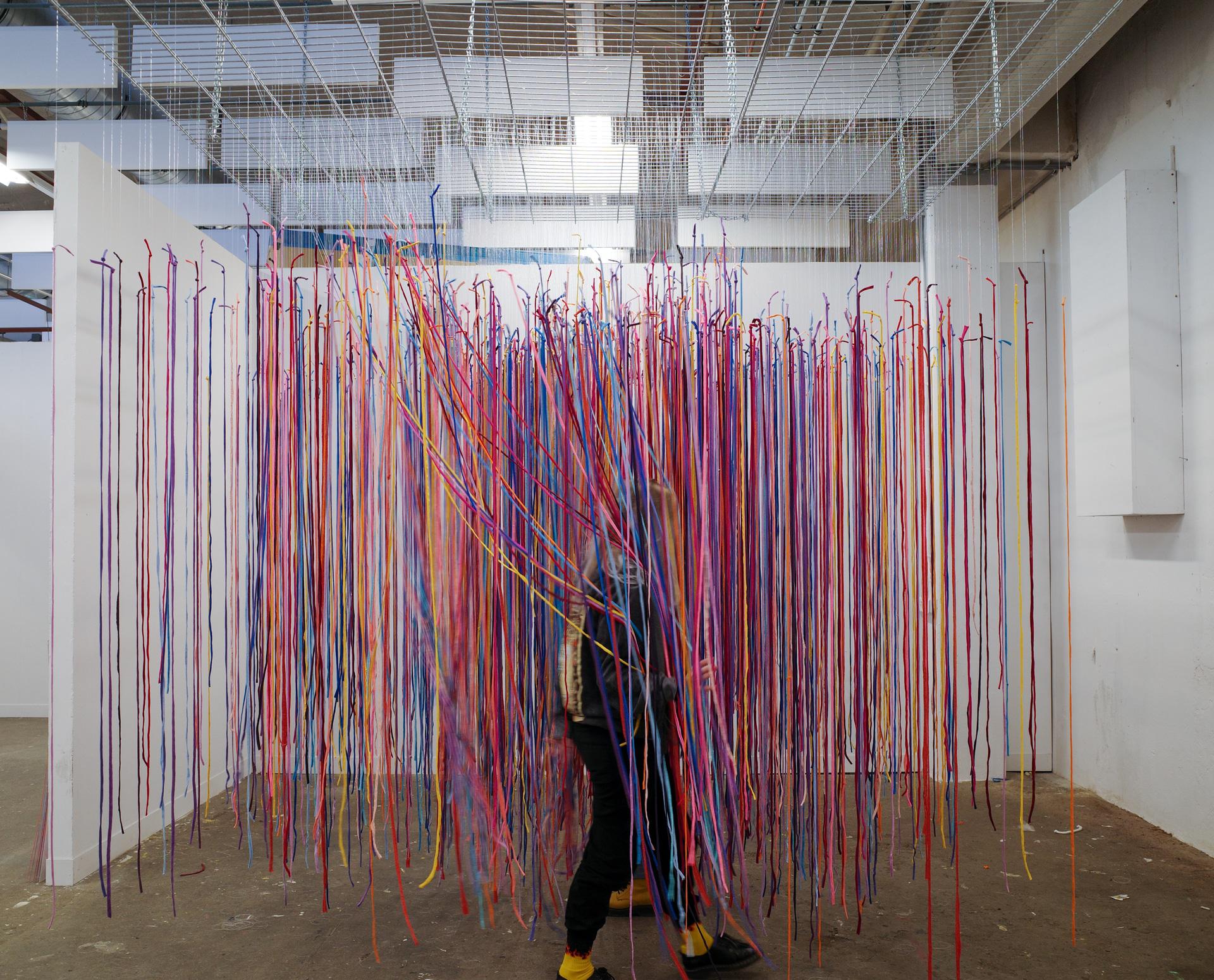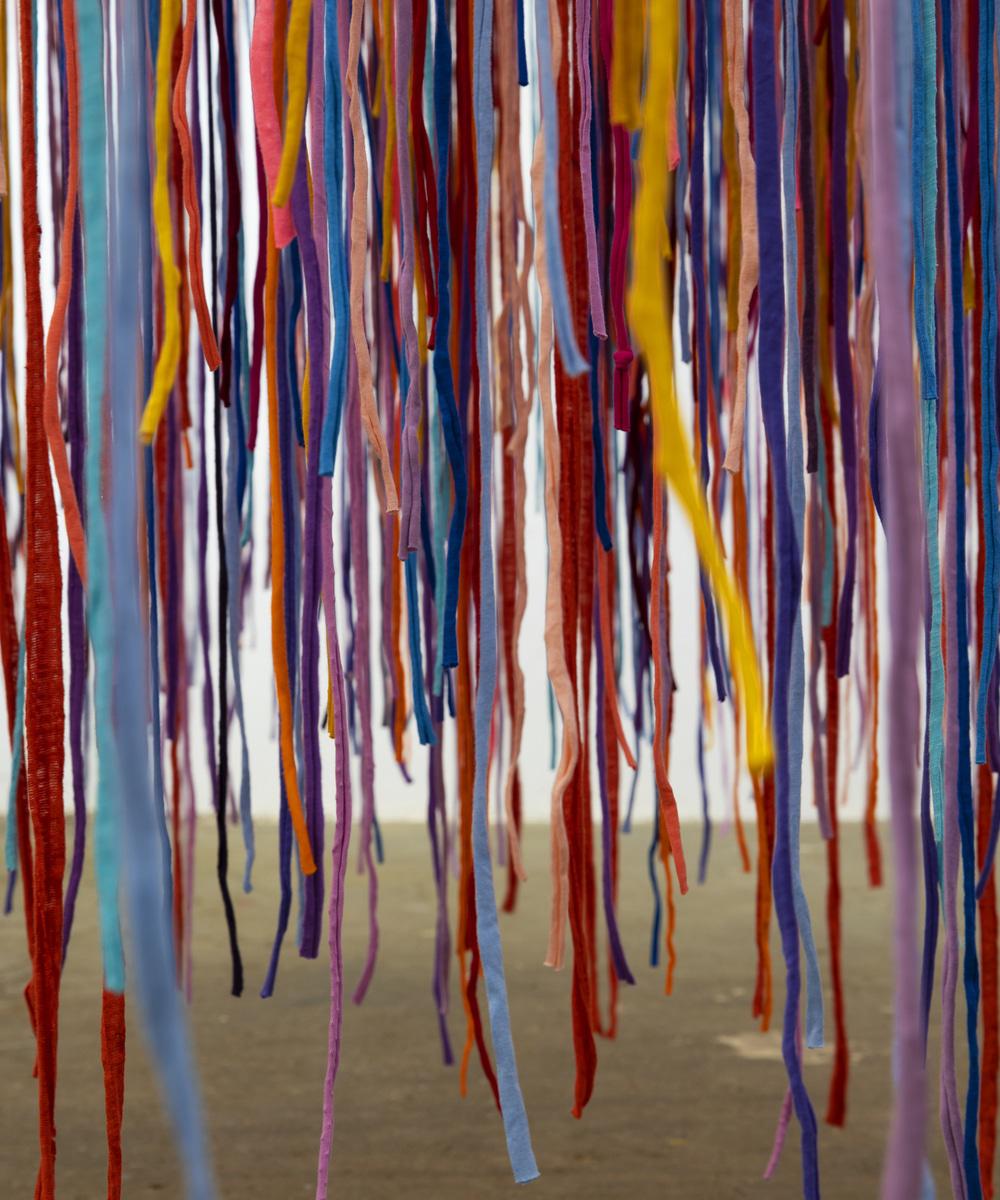The presenter has activated the presenter mode. Would you like to follow?
Follow presenter
You are following the presenter.
Stop following presenter
Since her grandmother taught her how to sow, textiles, threads, and strings play an important part in the life of Claire Holper. In her memory, textile work is synonymous for the happy, playful side of being a child. Therefore, she works to bring about an open and joyful range of works based mostly on working with strings. Either drawn on transparent surfaces, or suspended in the space, Holper’s works are a testimony to the frivolity of bringing various strings in different colours together and allowing them to freely intertwine.
For her graduation, Holper presents a version of her site specific installations in which she suspends a large amount of strings from a ceiling. The installation is accessible to the audience, enabling them to walk through, touch, ravel and unravel the strings. As most of the strings are made from recycled material, the installation provides a variety of colours and textures for the spectator to discover, while the interaction generates changing entanglements of threads that make the installation into an organic, living structure. It is this transformative quality that allows Holper to translate a sense of playfulness to her public, hoping to bring out their inner child. (Text by Menno Vuister)
For her graduation, Holper presents a version of her site specific installations in which she suspends a large amount of strings from a ceiling. The installation is accessible to the audience, enabling them to walk through, touch, ravel and unravel the strings. As most of the strings are made from recycled material, the installation provides a variety of colours and textures for the spectator to discover, while the interaction generates changing entanglements of threads that make the installation into an organic, living structure. It is this transformative quality that allows Holper to translate a sense of playfulness to her public, hoping to bring out their inner child. (Text by Menno Vuister)

 Claire Holper
Claire Holper


 Claire Holper
Claire Holper